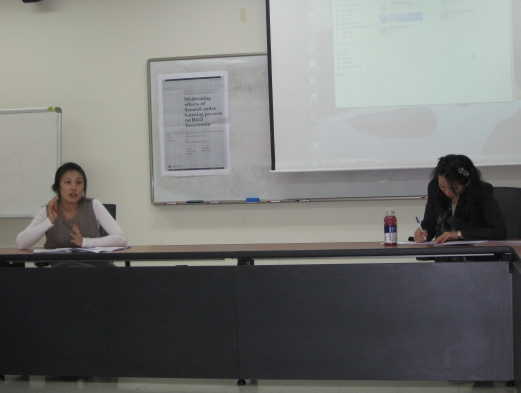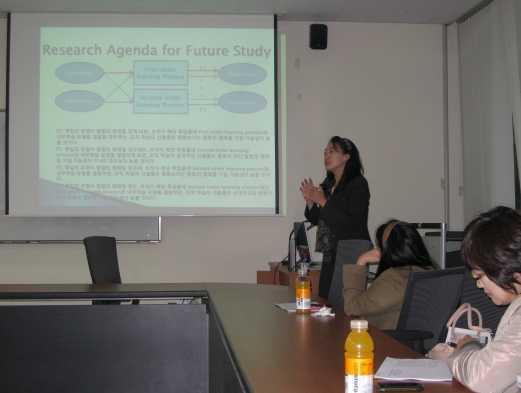홈 > 학술활동 > 초청포럼
[제17회 HK초청포럼] Research on Exploration, Exploitation and Second-order learning process
조회 수 6722 추천 수 0 2011.10.27 10:28:54Research on Exploration, Exploitation and Second-order learning process: Moderating effects of Second-order learning process on R&D Investment
김효정(상명대학교)
Introduced by March in 1991, the constructs of exploration and exploitation has been studied and reviewed in various fields of research such as management strategy, organizational learning, organizational innovation and competitive advantage and yet, the results are somewhat confusing (e.g. Levinthal and March, 1993; McGrath, 2001; Benner and Tushman, 2003; Holmqvist, 2004; Siggelkow and Rivkin, 2006; Sidhu et al., 2007; Raisch, Birkinshaw and Tushman, 2009). Numerous articles reviewing exploration and exploitation have so far presented mixed results not only in the definition of exploration and exploitation, but also in antecedents, moderating effects and performance variables of these constructs (Gupta et al., 2006; Li et al., 2008; Raisch and Birkinshaw, 2008; Lavie, Stettner and Tushman, 2010). This paper suggests that one of main reasons for mixed results comes from the lack of understanding exploration and exploitation as processes. Exploration and exploitation is a function where the input is conjoined with the internal process to produce an outcome. To clarify the understandings of research, one must first comprehend input, internal process and outcome. Different internal processes may lead to various outcomes for a given input. Thus, understanding exploration and exploitation process by process may present different results from previous studies.


세부내용은 첨부파일을 참조바랍니다.
Research on Exploration, Exploitation and Second-order learning process_20111026.pdf














































